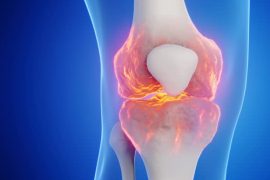According to research presented today at Heart Failure 2025, a scientific congress of the European Society of Cardiology (ESC), the waist-to-height ratio predicts the incidence of heart failure.
A significant percentage of heart failure (HF) patients are obese, and it has been shown that a rise in body mass index (BMI) raises the risk of HF. Study presenter, Dr. Amra Jujic from Lund University, explained why the current analysis was carried out: “BMI is the most common measure of obesity, but it is influenced by factors such as sex and ethnicity, and does not take into account the distribution of body fat. Waist-to-height ratio (WtHR) is considered a more robust measure of central adiposity, the harmful deposition of fat around visceral organs. In addition, whereas BMI is associated with paradoxically good HF outcomes with high BMI, this is not seen with WtHR. We conducted this analysis to investigate the relationship between WtHR and the development of HF.”
1,792 participants from the Malmö Preventive Project made up the study population. Approximately one-third of the participants, who ranged in age from 45 to 73 at baseline, had normal blood glucose levels, one-third had impaired fasting glucose, and one-third had diabetes. Every participant was prospectively monitored for HF incidents.
With a mean age of 67, 29% of the study population was female. With an interquartile range of 0.52 to 0.61, the median WtHR was 0.57.
There were 132 HF incidents over the median follow-up of 12.6 years. Independent of covariates, higher WtHR was linked to a significantly higher risk of incident HF (hazard ratio [HR] per one standard deviation rise 1.34; 95% CI [CI] 1.12–1.61; p=0.001). When WtHR was divided into quartiles, those with the highest WtHR values (median of 0.65), as opposed to those in the other three quartiles, had a significantly increased risk of heart failure (HR 2.71; 95% CI 1.64–4.48; p<0.001).
Study co-author, Dr. John Molvin from Lund University and Malmö University Hospital, Sweden, noted: “The median WtHR in our analysis was considerably higher than 0.5, the cut-off for increased cardiometabolic risk. Having a waist measurement that is less than half your height is ideal.” He concluded: “We found that WtHR was a significant predictor of incident HF and our results suggest that WtHR may be a better metric than BMI to identify patients with HF who could benefit from therapies for obesity. Our next step is to investigate whether WtHR predicts incident HF and also other cardiometabolic disorders in a larger cohort.”
Disclaimer:
The information contained in this article is for educational and informational purposes only and is not intended as a health advice. We would ask you to consult a qualified professional or medical expert to gain additional knowledge before you choose to consume any product or perform any exercise.







